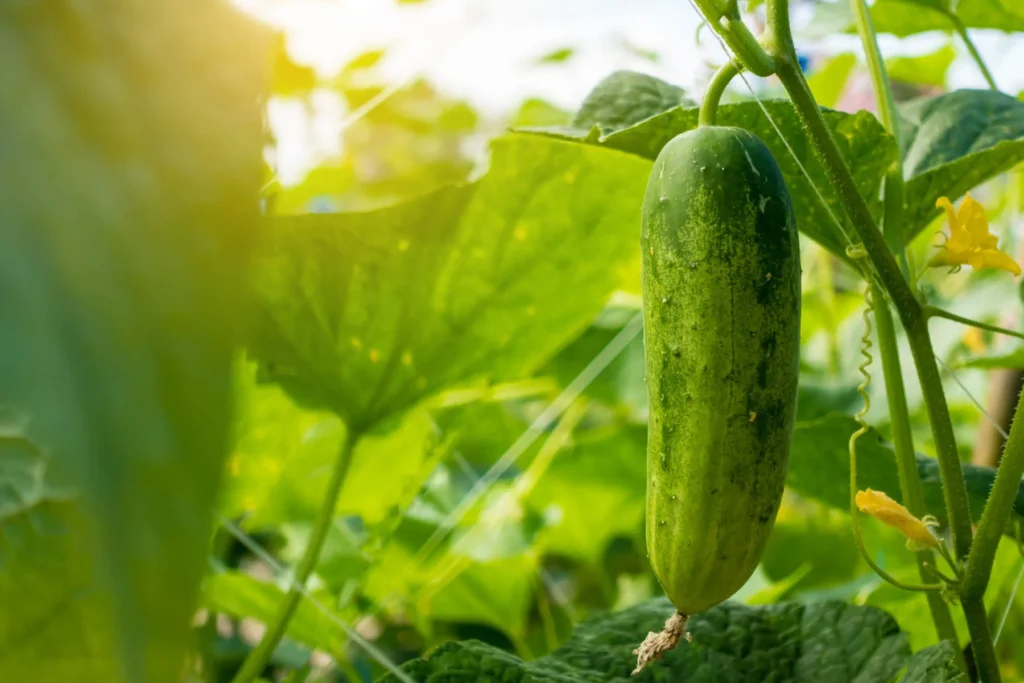Rooftop gardens have become increasingly popular in urban areas, providing a way to utilize otherwise unused space and contribute to a greener environment. Growing cucumbers on your rooftop garden is a rewarding venture, offering fresh, home-grown produce while adding greenery to your surroundings. Here’s a step-by-step guide to help you successfully cultivate cucumbers on your rooftop.

1. Choosing the Right Variety
Start by selecting the cucumber variety that suits your rooftop garden. Bush varieties like ‘Bush Champion’ or ‘Spacemaster’ are ideal for limited spaces as they are more compact. If you have ample space and a trellis system, vining types such as ‘Marketmore’ or ‘Straight Eight’ can be excellent choices.
2. Preparing the Containers
Containers: Choose large containers with a minimum depth of 12 inches to allow adequate root growth. Ensure the containers have drainage holes to prevent waterlogging.
Soil: Use a high-quality potting mix rich in organic matter. A mix of compost, peat moss, and vermiculite or perlite will ensure good drainage and nutrient availability.
3. Planting the Seeds
Timing: Cucumbers thrive in warm weather, so plant your seeds after the danger of frost has passed and nighttime temperatures are consistently above 55°F (13°C).
Sowing: Plant seeds 1 inch deep into the soil. If using containers, plant 2-3 seeds per container and thin them to the strongest seedling after they germinate.
4. Providing Support
Cucumbers are climbers and benefit from vertical support. Install a trellis or stakes to keep the vines off the ground, improving air circulation and reducing disease risk. Training the vines to grow vertically also saves space and makes harvesting easier.
5. Watering and Fertilizing
Watering: Cucumbers require consistent moisture. Water deeply but avoid waterlogging the soil. During hot weather, you might need to water daily. Ensure the soil is evenly moist but not soggy.
Fertilizing: Cucumbers are heavy feeders. Start with a balanced, slow-release fertilizer mixed into the soil at planting time. Once the plants start to flower, switch to a high-potassium fertilizer to support fruit development.
6. Managing Pests and Diseases
Pests: Common pests include aphids, cucumber beetles, and spider mites. Use insecticidal soap or neem oil to control infestations. Introducing beneficial insects like ladybugs can also help manage pest populations.
Diseases: Watch out for powdery mildew and downy mildew, which can be common in humid conditions. Ensure good air circulation and avoid overhead watering to minimize these risks. Remove and dispose of any infected leaves to prevent the spread of diseases.

7. Harvesting
Cucumbers are typically ready to harvest 50-70 days after planting, depending on the variety. Harvest when the cucumbers are firm and have reached the desired size. Regular harvesting encourages the plant to produce more fruits. Use a sharp knife or scissors to cut the cucumbers off the vine to avoid damaging the plant.
8. Additional Tips for Success
- Sunlight: Ensure your cucumbers receive at least 6-8 hours of direct sunlight daily. If your rooftop is partially shaded, consider using reflective surfaces to increase light exposure.
- Wind Protection: Rooftops can be windy, which can stress cucumber plants. Use windbreaks or place the containers near sturdy structures to shield them from strong winds.
- Mulching: Mulch around the base of the plants with straw or bark to retain soil moisture and regulate soil temperature.
Growing cucumbers on a rooftop garden is not only possible but also highly rewarding. With proper care and attention, you can enjoy a bountiful harvest of fresh cucumbers, contributing to your healthy lifestyle and urban greening efforts. Happy gardening!


Leave A Comment